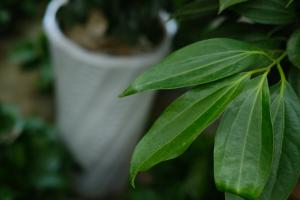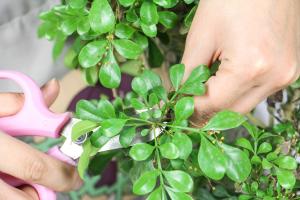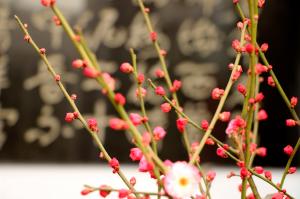Introduction
Jade plants are popular houseplants that require minimal care. They are native to South Africa and can add a touch of greenery to any indoor space. Whether you are a beginner or an experienced gardener, here are some tips on how to take care of a jade plant.
Lighting
Jade plants prefer bright, indirect sunlight. They can also tolerate some direct sunlight, but too much can scorch their leaves. Place your jade plant near a window that receives bright but filtered light. Avoid placing it in a window that receives direct sunlight for extended periods of time.
Watering
Jade plants have thick, fleshy leaves that store water, so they do not require frequent watering. Allow the soil to dry out completely between watering sessions. Overwatering can lead to root rot, which can be fatal to your jade plant. Use a well-draining potting mix to ensure that excess water drains out of the pot quickly.
Fertilization
Jade plants do not require too much fertilizer. You can feed your jade plant with a balanced, water-soluble fertilizer once a month during the growing season (spring and summer). However, be sure not to overfeed your jade plant, as too much fertilizer can cause the leaves to turn yellow and fall off.
Temperature
Jade plants prefer temperatures between 65-75掳F (18-24掳C). They can tolerate slightly cooler temperatures but not temperatures below 50掳F (10掳C). Avoid placing your jade plant near cold drafts or air conditioning vents, which can cause the leaves to drop.
Humidity
Jade plants do not require high humidity levels. They can tolerate low humidity, but the leaves may benefit from occasional misting, especially during the dry winter months or in dry indoor environments.
Pruning
Jade plants can grow up to 6 feet tall if left unpruned, but they can also be kept small and compact with regular pruning. Prune your jade plant in the spring or summer by pinching off the top leaves to encourage bushier growth. You can also prune off any yellow or diseased leaves as needed.
Pests and Diseases
Jade plants can occasionally attract pests such as mealybugs and scale insects. Prevent these pests by regularly inspecting your plant for any signs of infestation and wiping off any pests with a damp cloth. Jade plants can also be susceptible to fungal diseases such as root rot and powdery mildew. Avoid overwatering and provide good air circulation to prevent these diseases.
Conclusion
In summary, jade plants are low-maintenance houseplants that require minimal care. By providing bright but filtered light, allowing the soil to dry out between watering sessions, and occasionally fertilizing and pruning, your jade plant can thrive for years to come. Remember to keep an eye out for pests and diseases and take action immediately if you notice any issues. Happy gardening!

 how many times do yo...
how many times do yo... how many planted tre...
how many planted tre... how many pine trees ...
how many pine trees ... how many pecan trees...
how many pecan trees... how many plants comp...
how many plants comp... how many plants can ...
how many plants can ... how many plants and ...
how many plants and ... how many pepper plan...
how many pepper plan...






























